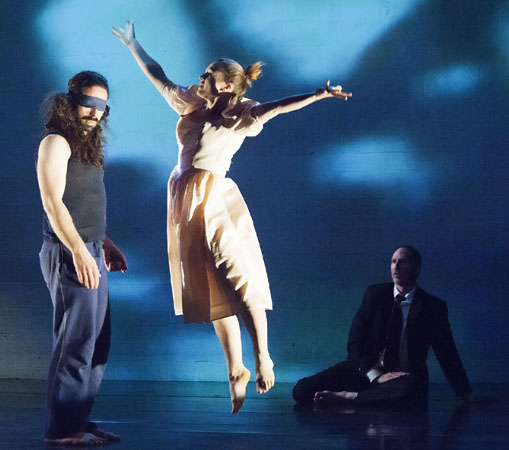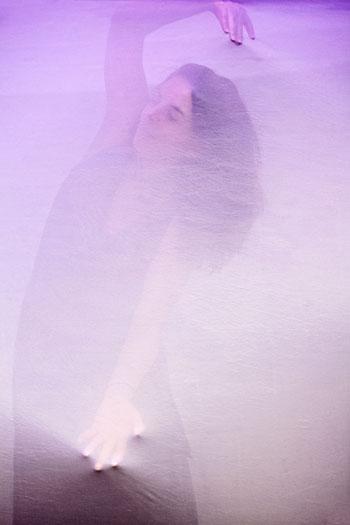"Human Landscape Dance is grounded in contact improvisation. Shute put this to good use in“Aurora’s Dream,” which revealed what Sleeping Beauty was dreaming about all those years. The dream looked a cross between Disneyland and Hieronymus Bosch. The prince was a deviant for having crept into her bedroom. Bad fairies threatened her safety."--from the Washington Post review of Human Landscape Dance's performance at Dance Place, Washington DC, in December, 2012, by Pamela Squires.
Aurora, in Mother Goose’s “Sleeping Beauty,” shares many common features with heroes in folktales around the world: a mysterious birth, an early threat to her safety, etc. She does not, however, get to go on a quest: she never slays her dragon.
The ballet Sleeping Beauty, choreographed by Marius Petipa, reconciles this omission by including a scene in which, during her dream, she travels to her prince charming, Prince Desire, and claims him. Prince Desire is Aurora’s Holy Grail: the object of her quest.
Petipa’s ballet also reintroduces rape in the figure of Carabosse, the evil fairy (traditionally played by a man) who puts Aurora to sleep by giving her a phallic spindle hidden in a bouquet. (Rape, a key feature of early versions of the Sleeping Beauty tale, was also omitted by Mother Goose.) The Prince, too, although chosen by Aurora, violates her by creeping into her chamber and kissing her awake. Petipa, following early versions of the myth, represents men as simultaneously evil and good, both Jekylls and Hydes.
Human Landscape Dance’s “Aurora’s Dream” follows Aurora’s quest in her subconscious. In this dream/nightmare, she battles her personal demons in the shape of Prince Desire. They wrestle for dominance. Prince Desire, played by Alexander Short, knocks down Aurora, Mary Szegda, then falls on top of her. She pushes him off, and he curls her onto his lap. She pulls away, yanking him upward, as he digs in his heels, lowering her downward.
Aurora, wearing a blindfold, draws Prince Desire into being. She traces his body along his collarbone, over his shoulder, down his arm, across his chest, and even along his face. She lays claim to him bodily.
Yet, the prince’s motives are always suspect. Early in the dance, Aurora navigates her chamber blind. Prince Desire catches her when she falls, but he also stands in her way, impeding her movements. She stumbles sideways and he lifts her from the ground. Yet, he does not cradle her as a hero cradles an ingénue; rather, he receives and returns her momentum like a wall.
Photos on this page by Siobhan Hanna and Jennifer Mueller.
Our Dance Video was recorded on location in Plaza Blanca at Abiquiu NM. Videographer Denaise Seals co-directed our production. Aurora is played by Nicole McClam; Lilac Fairy, by Eliza Talbott.


